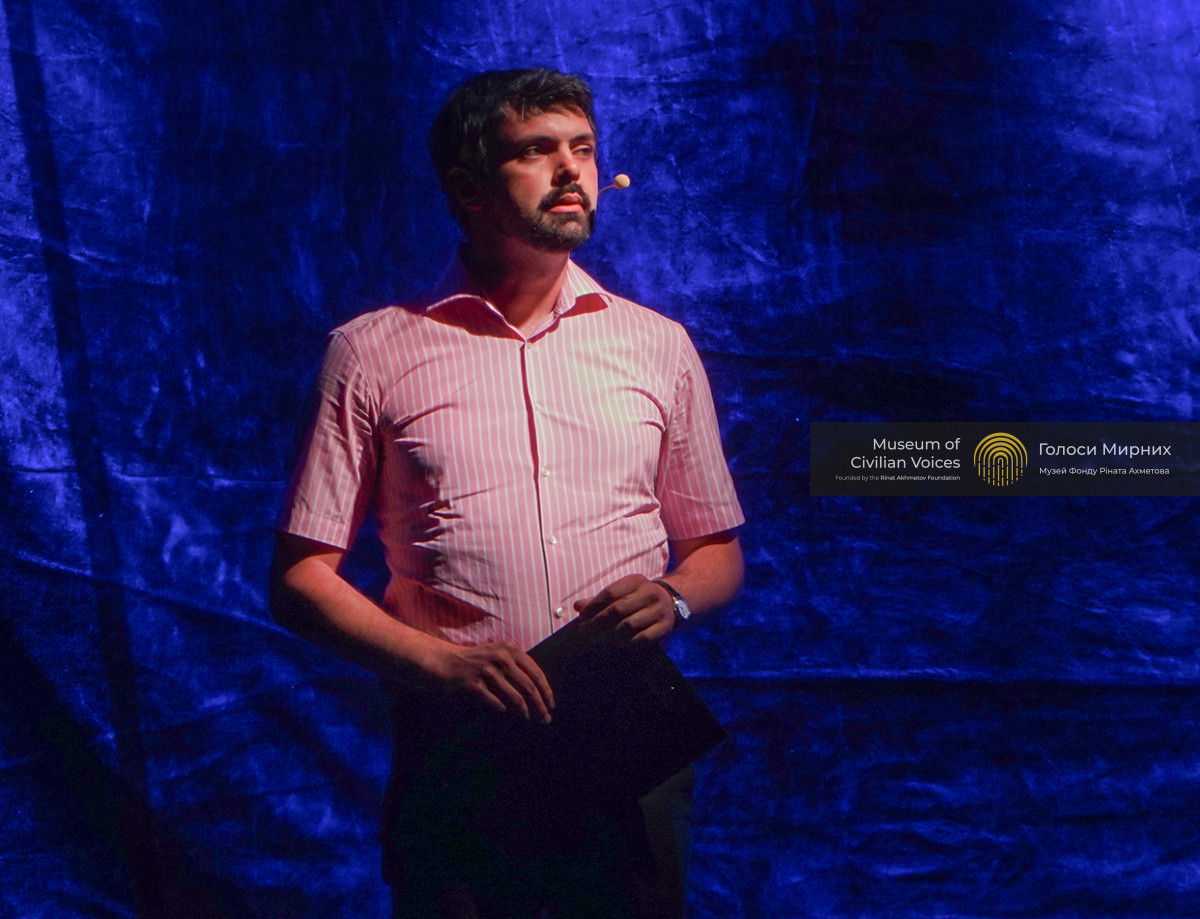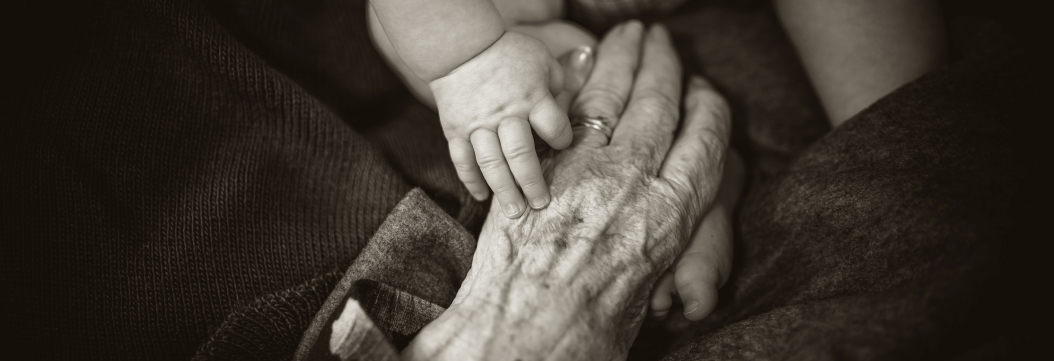Speech by Anton Drobovych, the director of the Ukrainian Institute of National Memory, at the Grand Opening of the online Museum of Civilian Voices of the Rinat Akhmetov Foundation in Kyiv on 23 June 2021.

The Museum of Civilian Voices is a very impactful project emotionally. Many countries that went through large-scale traumas, including the traumas of totalitarian regimes, established special institutions that have been working with and now continue to work with memory. They function in Lithuania, the Czech Republic, Poland and Ukraine.
The task of such institutions is to help keep in memory, to help remember what has been forgotten, distorted or falsified due to various circumstances. In this effort, access to primary sources, to archival materials, access to people’s testimonies is very important.
Involvement of psychologists by the Museum is the right approach to memory
It is very difficult to work with memory. Memory is a subjective, emotional and extremely volatile thing. It requires fixation. Very often it changes when it is not fixed immediately. People may watch the news, talk to each other, and suddenly begin to “recall” things they did not see in person, but when they combine details of what they saw on TV or heard from someone, they recount them as their own. Memory is a very complex story.
That is why when working with memory, it is crucial to always bring together experts in history (there is a separate genre of “oral history”; Ukraine has an association of oral history, one of the best in Eastern Europe) and psychologists. Because when memory is associated with a trauma, it is even harder.
A traumatic story does not want to go out because it re-traumatizes a person. Much of the storytelling is about a therapeutic part. That is why the Museum of Civilian Voices engaged professional psychologists for collecting stories.
The Museum of Civilian Voices is a very ambitious effort and a project for the future
In preparation for this speech, I did a little research, and I would like to set the context. The Museum of Civilian Voices is a very ambitious effort and a project for the future. No society can recover from these complex traumas without the help of the state and private initiatives. Especially if it is reminded that our traumatic factor – the war in Donbass – still continues to be acute.
This is probably one of the most difficult cases. And in this regard, I would like to wish success to the whole team because the ambition of this goal is extraordinary, as well as the challenges.
New world format. ‘The Museum of Civilian Voices is unprecedented’
The trend of creating online museums appeared in the 90s of the twentieth century. The first were the Guggenheim Museum, the History of Science Museum in Oxford, and then came the NASA Museum, and the Terracotta Army Museum in China. Their specific feature is stories about exhibits. They were based on existing traditional museums that simply “went digital” and began to create online tours. This is the first block of museums’ virtualization.
At the same time, there are some specific, very powerful collections and vivid museums. For example, the USC Shoah Foundation (https://sfi.usc.edu) created by Steven Spielberg. At first, it was filled with testimonies of Holocaust witnesses – its survivors.
In the 1990s, Spielberg financed some groups of people that travelled the world, who worked in Kyiv and Ukraine in particular, and collected stories that help to understand the Second World War. And although many years have passed since then, but those collected stories are extremely valuable.
Initially, this museum was filled with reflections of Holocaust witnesses, and now the USC Shoah Foundation depicts genocides in other countries. In other words, that is a very large online project based on human stories. This is the second block of virtualization.
These archives are now living a new life. These are also museums where their exhibits are not some objects, but stories of people.
We now live in a time when there are new formats of museums that have emerged not around objects, and include not only people’s stories. For example, the International Museum of Women or the International New Media Gallery, the Virtual Museum of Soviet Repression in Belarus.
This is still an experimental pathway and that is why the Museum of Civilian Voices in Ukraine is unprecedented. For that reason, I wish the Museum’s team great success.
‘Ukraine needs the Museum of Civilian Voices’
The fact is that there is not any handbook or manual on how to do it. This path is untrodden, and this trail is being blazed right now.
It is impossible to have a full picture of events if we focus on the optics of war only in terms of tanks, cannons, heroic feats of soldiers or crimes of invaders. Although this tradition is very common in our latitudes, when the war is spoken about in some “heigh-ho” mood, is referred to as something heroic, when kids run around with machine guns. However, that is not the only viewpoint on the war.
Very often there is a lack of human view, a lack of view from civilians who are exposed to these tanks, machine guns and cannons, and against whom they act. Little has been said about this.
Why there were no optics or viewpoints of civilians when information about the Second World War was collected? This is a separate story that is quite complicated. Perhaps one of the reasons why there is the act of aggression now, there is the war in Donbass now, is a lack of optics of civilians, a missing viewpoint from under occupation, a view of victims.
Another important story is the completeness of the picture. There are many organizations now that record crimes in Donbass and Crimea. There is the Ukrainian Helsinki Human Rights Union, there is the Verkhovna Rada Commissioner for Human Rights, and there is the Crimean Tatar Resource Centre. There are annual UN human rights reports, but these are very specific complex legal documents.
If all we remember about this war will be only such documents, we will never have a full picture. That is why it is very important to hear voices of civilians who do not speak using legal officialese, but would rather share their stories and their experiences.
In the future, the Museum’s materials can be of great help in implementing the concept of transitional justice. This is a completely untrodden path too, which will be easier to blaze if the country has such a museum.
Key challenges and high work quality of the Museum of Civilian Voices
About responsibility
High standards of work under the methodology of oral history – this is a very complex and specific thing. The Museum’s team maintains high quality standards for recording of stories, standards for visual materials, translation and lingual accessibility. This can be assessed by visiting the portal of the Museum of Civilian Voices: https://civilvoicesmuseum.org/.
Involvement of psychologists is about people’s security
This is a very difficult challenge, which, as I know, has been addressed by the team. This aspect is also important for people who work at our Institute, which has the Oral History Archive. We also seek to take it into account when collecting oral stories. This is very important. In fact, many people cannot tell their own stories because of security concerns.
The most difficult challenge is to ensure objectivity in a patently subjective genre
Naturally, oral stories are always a subjective thing. How to combine them with archival data, facts and chronicles? This is a challenge that goes beyond the boundaries of one organization and becomes resolvable through collaboration with the government, society and scientists, who will then work with all this.
A look into the distant future – Civilian Voices for the sake of peace
If in the events of the Second World War we had focused more on how people, and not only war veterans, but also civilians under occupation, survived that war, we would have a completely different attitude to the war.
When I was watching the video of the Museum of Civilian Voices, I especially memorized recollections of Svitlana Oleksandrova. Svitlana mentioned her grandmother who always said in her wishes, 'Value peace.' She talked about it all the time, at weddings, dates, in toasts. Children even laughed at it, but their attitude changed when the war in Donbass began. ‘We have realized it only now how wise our grandmother was,’ said Svitlana.
We have a great and valuable opportunity to collect the stories of the war in Donbass right now, while those who remember it are alive. We need to collect them so that our children and grandchildren could understand what war really is, and in order to guard them from the next war. I wish success to the team working on such an important project. I wish them success in coping with this challenge.


